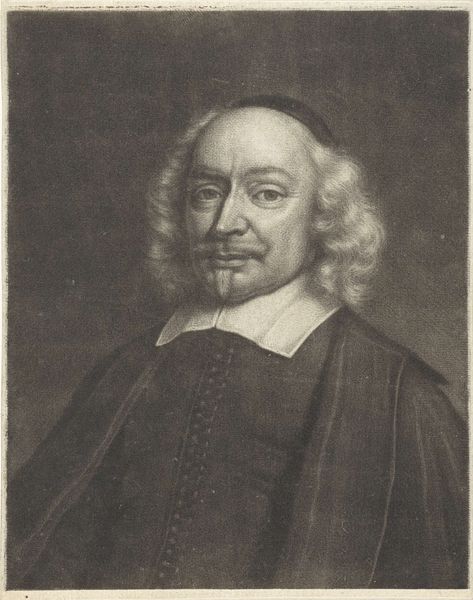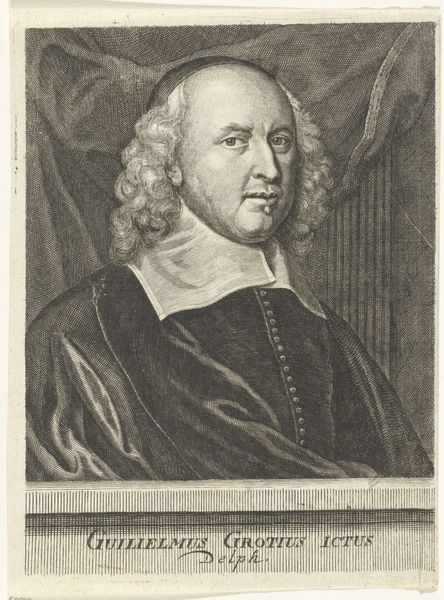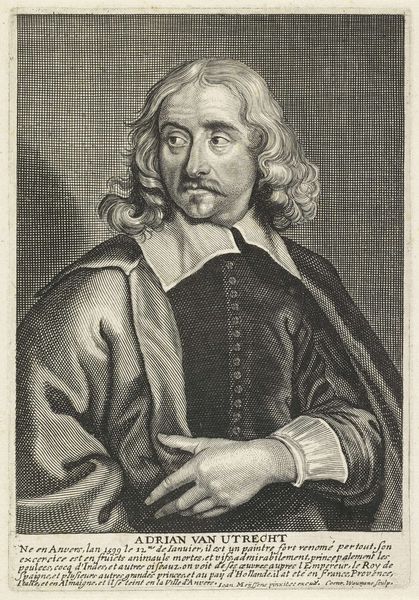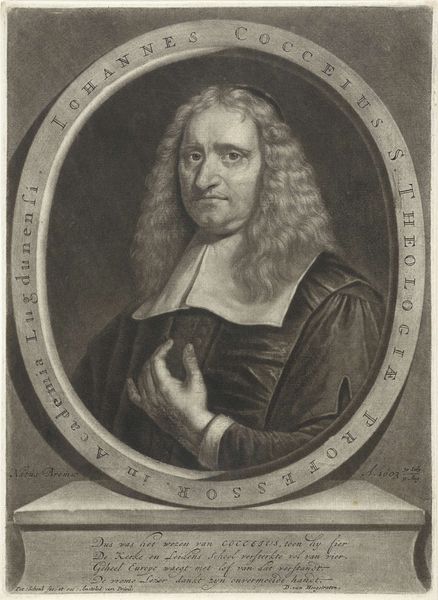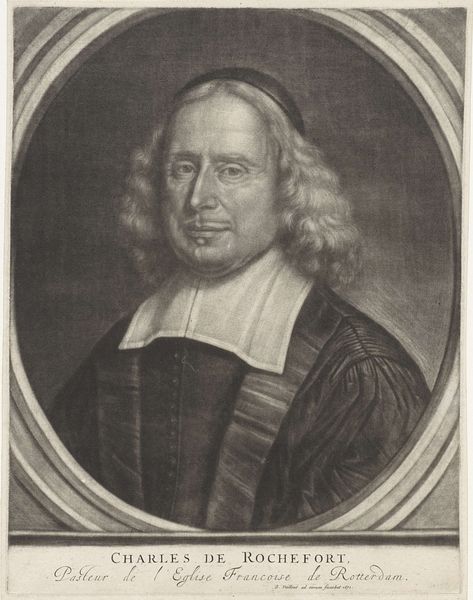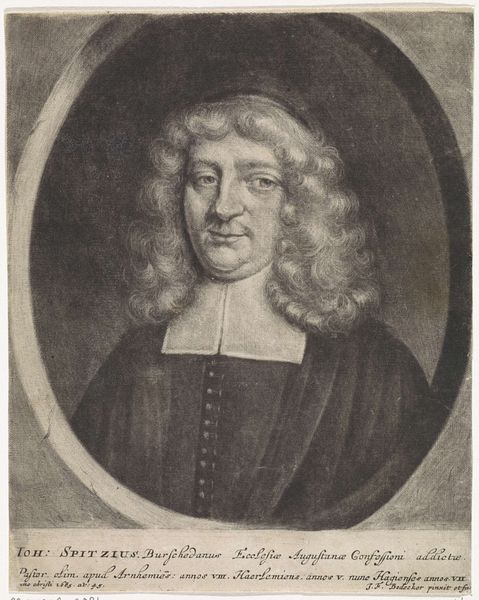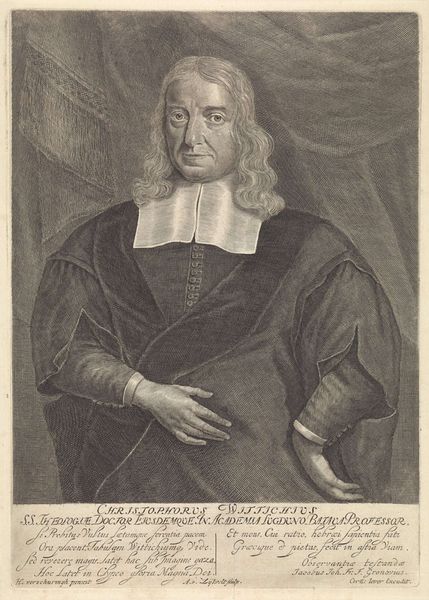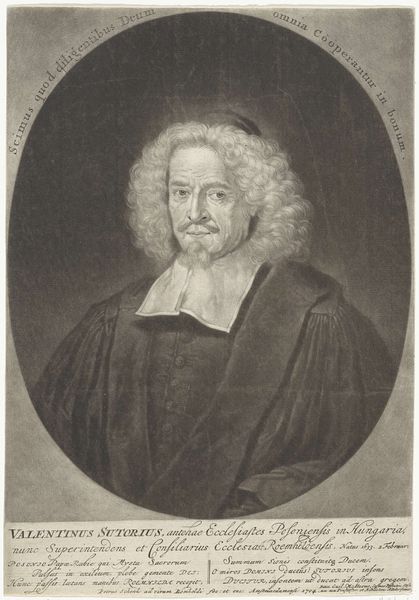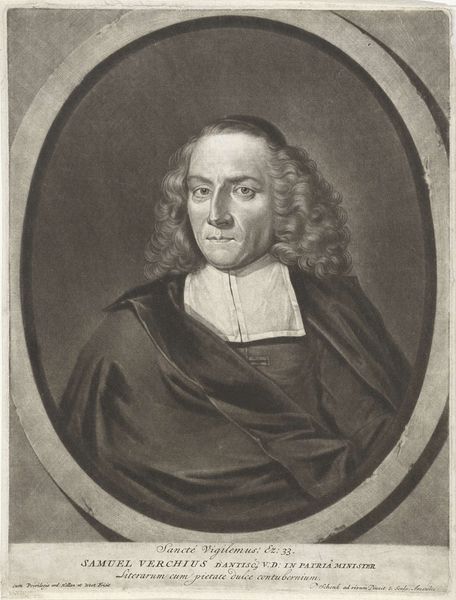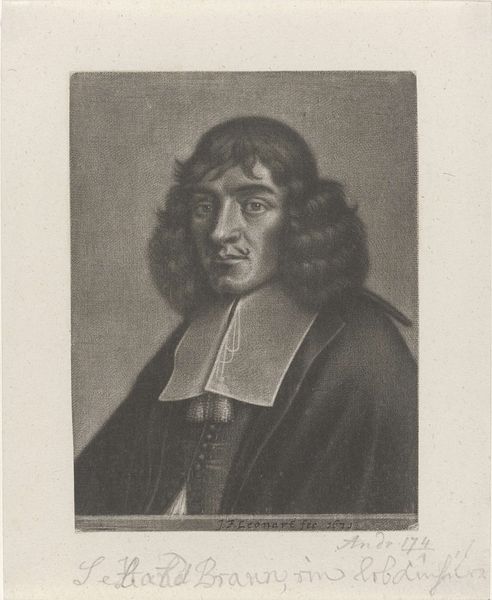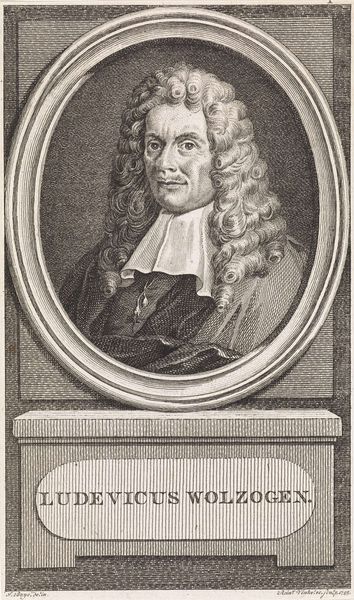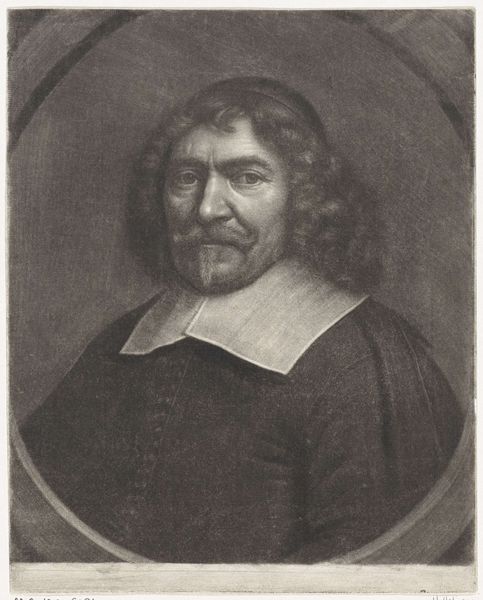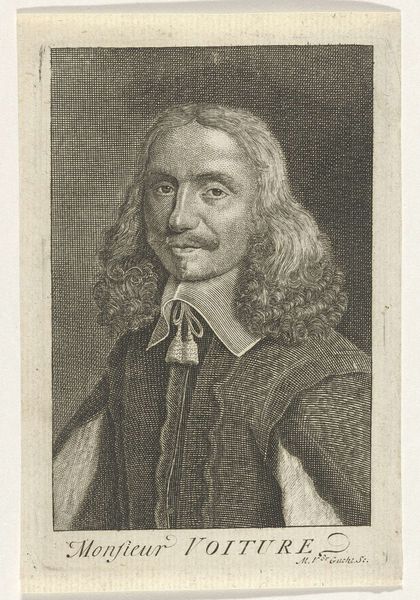
print, metal, etching
#
portrait
#
baroque
# print
#
metal
#
etching
Dimensions: height 179 mm, width 135 mm
Copyright: Rijks Museum: Open Domain
Editor: So, here we have "Portret van de predikant Jean Daillé" by Wallerant Vaillant, dating somewhere between 1658 and 1677. It's an etching, made with metal. There is such gravity to his gaze. What strikes you about this portrait? Curator: What jumps out to me is how this print engages with the power dynamics of the era. Jean Daillé was a prominent figure in the French Reformed Church, a Protestant group that faced significant persecution. Portraits like these weren’t just about capturing a likeness. They were about asserting identity and authority, especially within communities under pressure. Think of how printmaking, as a relatively accessible medium, could disseminate this image widely. What statement was being made? Editor: So the choice of making it a print meant that it could reach many people? Curator: Exactly. And that challenges the exclusivity often associated with painted portraits of the elite. Consider the Baroque style. It often suggests grandeur and drama, but here, the somber tones and the sitter's direct gaze communicate steadfastness rather than ostentation. In the socio-political landscape of the time, how might such an image function for the Protestant community? Editor: It projects resilience, maybe even defiance? He looks quite determined. It's interesting how a portrait can operate as a political statement. Curator: Precisely. It prompts us to consider art's function in shaping public perception. Daillé's portrait transcends a mere visual record; it embodies a community’s struggle for recognition and survival in a world defined by religious conflict. Editor: This reframes my whole perspective on it. I appreciate the context, highlighting its broader socio-political impact beyond aesthetics. Curator: Indeed. Looking at art through a historical lens always reveals these complex layers.
Comments
No comments
Be the first to comment and join the conversation on the ultimate creative platform.
